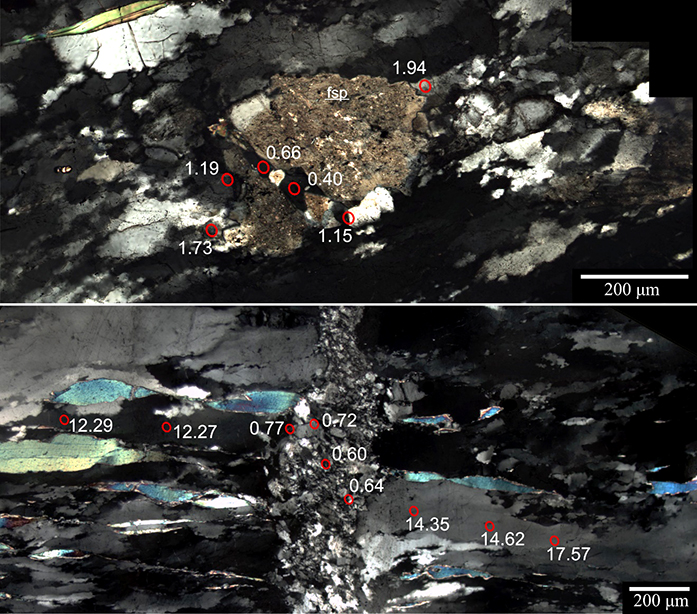Quartz is a critical ingredient of our planet’s continental crust. Geologists believe the mineral’s physical properties may focus deformation in quartz-rich regions, strongly influencing earthquakes, mountain building, and the slow crawl of continents. Quartz (silicon dioxide) is also one of the most abundant minerals in Earth’s continental crust, so it is important to understand its potential for recording a history of Earth events.
To test this quartz hypothesis, researchers are seeking a better grasp on how quartz responds to deformation under different conditions of stress, temperature, and pressure. In 2014, a team of geologists presented a new approach for examining quartz that was deformed in the geologic past and reconstructing the conditions at which the deformation took place. Nachlas et al. analyzed generations of quartz that grew during different stages of deformation and used this to piece together the history of an ancient fault system. As quartz recrystallizes during deformation, it stores the pressure and temperature at which recrystallization occurs as minute variations in titanium content. This property allowed the researchers to extract paleotemperatures and pressures based on parts-per-million variations in titanium. The authors consider titanium a robust recorder of deformation history because it diffuses slowly in quartz.
The team examined rocks in the Canadian Cordillera mountain range, focusing on outcrops near the Columbia River, where highly deformed quartzite (very quartz-rich rocks) are exposed in an ancient fault zone. The authors showed that by measuring different amounts of titanium in quartz that grew at different depths in the crust, it is possible to detect multiple events involved in slip on a fault—and to know the temperature and depth at which these events occurred. Therefore, this technique has the potential to reconstruct tectonic events that shake the continents. (Geochemistry, Geophysics, Geosystems, doi: 10.1002/2013GC005200, 2014)
—Eric O. Betz, Freelance Writer
Citation: Betz, E. (2015), Trace element holds the key to deformation of continents, Eos, 96, doi:10.1029/2015EO021983.
Text © 2015. The authors. CC BY-NC 3.0
Except where otherwise noted, images are subject to copyright. Any reuse without express permission from the copyright owner is prohibited.

